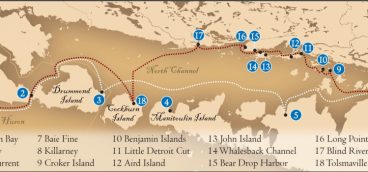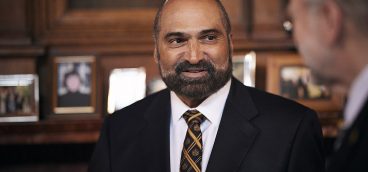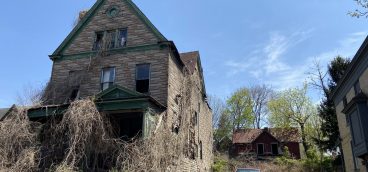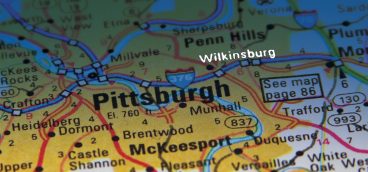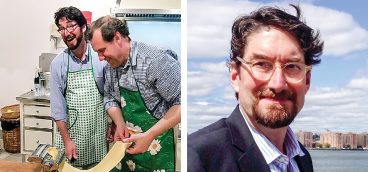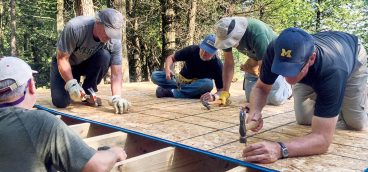Get Ready for Pittsburgh Tomorrow
Let’s galvanize Pittsburgh, reverse decline and welcome new people
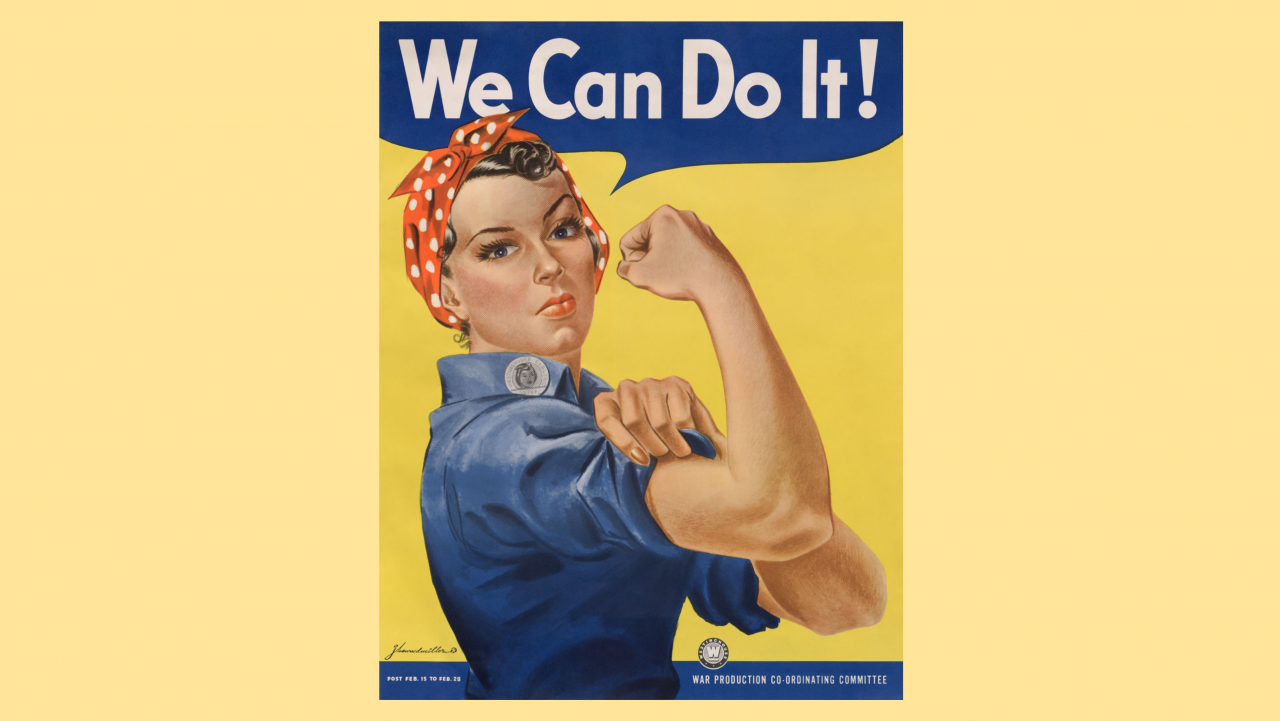
J. Howard Miller’s “We Can Do It!”, also called “Rosie the Riveter” after the iconic figure of a strong female war production worker. Source: Wikicommons
March 13, 2023
In the spring issue three years ago, I wrote a long essay about the need for a big plan to reverse Greater Pittsburgh’s downward economic and demographic trends. A Pittsburgh friend called it my Magnum Opus, the product of 35 years of journalistic efforts here, much of it aimed at moving this region ahead. In retrospect, the most interesting thing about that essay is that it received virtually no response (thud).
Part of that was because it came out just before COVID swallowed the world. But I also think that part of it was because writing about something isn’t the same as doing something about it. So despite the fact that I’ve finally reached the stage where I can work on the writing projects I’ve long imagined, I spent much of last year investigating running for Allegheny County Executive.
Why? In “It’s a Wonderful Life,” Jimmy Stewart calls his nemesis Potter, “A warped, frustrated old man,” Leaving warped aside, I’m definitely frustrated with this region’s somewhat glacial progress. I hate to think that so many years of effort have come to so little. Beyond that, I believe the city state of Pittsburgh is in trouble and needs bolder vision and action.
Economically and demographically, Pittsburgh has long been in decline. Once the nation’s ninth biggest city, it’s now 68th or 70th depending on the source, just above Greensboro, North Carolina and Lincoln, Nebraska. In the next year or two, Pittsburgh will fall below 300,000 people, well under half of its peak of 675,000. While U.S. population has increased by 120 percent since 1950 and 39 percent since 1980, the seven counties of the current Pittsburgh Metropolitan Statistical Area (MSA) have been nearly alone among big metro areas in losing population — down 7 percent since 1950 and 15 percent since 1980.
Allegheny County Executive Rich Fitzgerald is justifiably proud that, in the last decennial Census, the MSA eked out a 0.6 percent gain. Unfortunately, though, that’s almost certainly a blip. Much of the gain came from migration to Pittsburgh from 2009-2014 when we fared better than other regions after the Great Recession because of the Marcellus Shale jobs boom. As the decade wore on, that reversed. And in 2021, Pittsburgh had the inauspicious distinction of having the highest natural population loss — more deaths than births — of any American metro area. Pittsburgh lost 10,838 people, followed by Tampa/St. Pete (-9,291) and Sarasota/Bradenton (-6,643).
Beyond that, comparing labor forces in 16 comparable regions between 2012 and 2022, the average region saw a 9.2 percent increase. Pittsburgh fared the worst with a 4.4 percent decline. During that same period, the 16 regions saw an average increase of 28.2 percent in overall jobs. Only one had an overall decline — Pittsburgh, losing -0.5 percent of its jobs.
Pittsburgh is a great place to live, and many successful efforts have created that reality. The problem is, after decades of efforts to “turn things around,” we again find ourselves at the bottom of the pack economically. The underlying cause dates to the cataclysmic job losses of the 1980s and the departure of 150,000 young people who also took their future children with them. We immediately became one of America’s oldest metro areas. And now, our economy and quality of life are poised to decline further simply because of more future deaths than births. Among the 16 benchmark regions, we have the highest percentage of people over 65 and the lowest of those under 18.
So in a way, it’s “not our fault” that we’re in this position. But it is our fault that we haven’t solved the problem. Instead of taking bold and unusual steps befitting our need, we have followed what other regions have done. When something new is suggested, the mantra is, “Has it been tried elsewhere?” In other words, is it safe?
Once after I came in dead last in a sailing race, my Dad said, “If you find yourself in last place, do something different, even if it’s wrong.” We are in last place demographically and economically. We are losing the intense competition among regions to attract workers and jobs. If we want to succeed, we have to be willing to try things that are different and bold.
Nobody likes to say anything bad about Pittsburgh — including me. But we lack a sense of urgency. Economically, we’re like the frog in the pot of water. If the frog were put into a pot of boiling water, it would jump out immediately. But if it’s put into lukewarm water with a slowly rising temperature, it won’t perceive any danger and will end up cooked. Like it or not, we’re facing a crisis that is so slow-moving that we collectively don’t recognize that, long-term, it’s threatening our civic life.
* * *
It was against that backdrop that I examined running for Allegheny County Executive. I met with potential funders, and many others, including the past County Executives. I put together a plan. But I ultimately decided against it for several reasons.
I could have run as a Democrat in this essentially one-party town (I’ve always thought journalists should be independents, and I’m registered as one). But I believe that, in order to succeed in changing Pittsburgh’s trajectory, we need to move beyond partisanship and get the whole community behind the effort.
Elected leaders can be crucial — for better or worse — but they have so many constituents that they generally can’t stray far from the status quo. And their best plans and intentions often get sidetracked by emergencies, such as a bridge collapse, riot, or pandemic.
I also believe that the amount of potential funds that could be raised would be greatly limited if directed toward a political candidate rather than a broad campaign to change Pittsburgh’s future.
Finally, a key possible partner in efforts to improve Pittsburgh — the local news media — could never partner with a political leader.
So I came to believe that a non-political route was the key. And the more I thought about it, the more I realized that by solving Pittsburgh’s problems, we can also do something bigger. At a time when the country is mired in toxic division, we can present a potent example of innovative civic renewal in which a community comes together and builds a new future. In short, we can make Pittsburgh matter again in the life of the nation.
To that end, today we are launching a new civic project — Pittsburgh Tomorrow. In this issue, we’ll report on the region’s economic and demographic realities. After those stories, we will publish — for the first time — an inspirational essay by the late David McCullough on Pittsburgh’s central role in American history, its inherent greatness, and the need to think big and be bold when re-envisioning its future. Next, the centerpiece will be 100 local leaders answering this question: In order to sustain this region’s future economy and quality of life, what’s your top idea to stem the population losses and attract new people?
I hope you’ll read the responses. But beyond that, I hope you will send your own best idea to pghtomorrow@pittsburghquarterly.com. We need them as we finalize Pittsburgh Tomorrow’s action plan. We’ll unveil that plan in the next three months — after we’ve received public input.
We’re not seeking explosive population growth — not that that’s a real possibility here. Across the country and globe, we see cautionary tales of sprawling, dysfunctional mega-cities. But we do want to stop population decline. The real problem with decline is that when the economic pie keeps shrinking, the battle to get your piece gets increasingly vicious. People get left out. Others — the young — seek opportunity elsewhere. We want a middle ground. We want to become a national model of civic sustainability by building a balanced and inclusive future for all.
Pittsburgh Tomorrow will join the many different efforts working on regional improvement, but we will focus on innovative, long-term ways to attract people through building civic unity.
Pittsburgh Tomorrow will be a nonprofit, raising money in ways that have become unusual here. Though Pittsburgh is blessed with roughly $15 billion in philanthropic assets, we won’t go there first. Our citizens must lead the charge. Only if Pittsburghers — at all levels — believe in and get behind the effort to resurrect their own town, only then will we ask local foundations to open their mighty war chests and magnify citizen contributions.
Pittsburgh Tomorrow will not be an entirely altruistic endeavor. We’ll count on what Alexis de Tocqueville famously noticed about Americans in the early 19th century — our enlightened self-interest, our ability to voluntarily come together in association to further civic interests while also helping ourselves.
Perhaps above all, Pittsburgh Tomorrow will be independent, and it will be entrepreneurial — prizing speed of execution, incentivizing partners and rewarding results.
* * *
Six years ago, one of my neighbors was CEO of the H.J. Heinz company, which was founded by a truly exemplary man. After he lost his first business in the panic of 1873, Henry Heinz kept a record of the names and amounts of everyone he owed. That was as unusual then as it is now, and in time, through his new company, he paid them all back. His prowess in innovation, marketing and business was matched by how well he treated his workers and his community, so that today, more than a century after his death, The Heinz Endowments still benefit Pittsburgh.
I didn’t know my CEO neighbor well, but we’d had him to dinner. So when he announced that he was moving the headquarters to Chicago, I wrote him a note, suggesting that if he kept the company in Pittsburgh, he could do something even greater than running a big company and making a lot of money; he could be part of building a community in a city where he could make a real difference, as opposed to being in Chicago, which was the same civic disaster then that it is now. He was from Sáo Paolo, Brazil, however, which is about as different from Pittsburgh as a place can be — a commercial capital with seemingly no cohesion, where people make money, sequestered from each other in residential high rises guarded by security.
I didn’t think then that I’d succeed with him, and I didn’t. But I felt obliged to try.
I also feel obliged to try with Pittsburgh Tomorrow. But the difference is, I believe we can succeed. We have all of the component pieces, and we have an historic opportunity to help ourselves, our region and our country. It just takes vision, belief, effort and will. And for us, unlike my old neighbor, Pittsburgh isn’t just a corporate stop. For us, it’s home.
Almost 30 years ago, I spent a weekend with Dr. Jonas Salk on the occasion of his 80th birthday. We developed a brief but memorable friendship — he died unexpectedly not long after. One thing he said was: “People often say, ‘Where there’s a will, there’s a way.’ I like to turn that around. Where there’s a way, there isn’t always the will.”
When Salk cured polio here, this was a Can-Do place. It has shaped this country’s history since the beginning, when George Washington narrowly escaped death several times here and went on to lead the Revolution. From the French and Indian War, through the westward expansion and the industrial Colossus that helped win The Civil War and World Wars I and II, Pittsburgh has been central in American life. Recently, other states (Ohio) and cities have taken that Can-Do mantle from Pittsburgh. It’s time for us to take it back, and in a much bigger way.
We will attract people by beckoning and welcoming them to a place that has something that’s increasingly lacking in the rest of the country: a strong and abiding sense of community.
We’re looking for people who appreciate what we have here: physical beauty, arts, education, a stable temperate climate and plenty of water. And beyond that, we’re looking for people who want to be part of a real community and to contribute to the concept of what it means to be a Pittsburgher. Pittsburghers know what that means intuitively, but in the coming months, Pittsburgh Tomorrow will articulate that into a simple document — A Pittsburgh Compact, in which people of all kinds and colors work, take care of their family and look out for their neighbors. That’s the rock upon which we’ll build the Pittsburgh of Tomorrow.
I’ve reached the age, personally, where I don’t care if people think I’m eccentric or crazy for presenting this opportunity. It’s there. We only need a little imagination, to see the image that is inside this block of wood and then work to make it emerge. What will emerge is what the country needs: an example of a place that, through no fault of its own faced a tough challenge but was willing to work together to overcome it.
Overcoming obstacles and making this place better is the story of Pittsburgh. But it’s been 40 years since the creation of the Cultural District, 30 since the drive to build new stadiums, and 20 since Riverlife began. Now it’s time for those of us who care to get behind a new and potentially bigger effort.
My view of it is simple: If we have the possibility of turning Pittsburgh around and providing an example of a guiding light for a country that is currently somewhat lost, how could we not try and make it happen?
Send your ideas to pghtomorrow@pittsburghquarterly.com. And stay tuned. Learn more at Pittsburghtomorrow.org
Pittsburgh Tomorrow begins today. PQ


